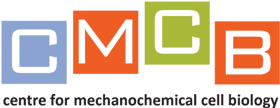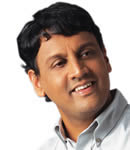
 What we do
What we do
We are interested in understanding one of the fundamental properties of the living world, i.e. the ability to physically divide from one to two. The cell division apparatus in highly conserved within kingdoms, but remarkably diverged between kingdoms. Eukaryotes use an actomyosin based contractile ring, bacteria use a tubulin-FtsZ ring, and archaea use a variety of division apparatuses. Our large focus is on understanding how the eukaryotic actomyosin ring is assembled from individual components, how it is positioned at the division site, and how it generates tension to divide one cell into two. We are also interested in understanding how cell division is orchestrated in archaea, focusing on a newly discovered group of archaea, termed Asgard, which may shed light on the evolution of cell division apparatuses.
Our work on eukaryotic actomyosin ring-dependent cell division uses fission yeasts Schizosaccharomyces pombe as a model. We have used traditional genetics, advanced imaging, and biochemistry to uncover molecular pathways regulating actomyosin ring positioning, assembly, and contraction and division septum assembly. More recently, we have embarked on the use of a variety of biophysical and synthetic biology tools to reconstitute actomyosin ring assembly and contraction using native and non-native parts. In what is a major technical achievement, we are now able to “isolate” actomyosin rings. We use this system in combination with genetics, biochemistry, and biophysics to understand how the ring generates tension. We use new approaches such as genetic code expansion (to introduce unnatural amino-acids in a site specific manner into ring proteins) and supported bilayers membranes to synthetically assemble actomyosin ring sub-complexes as well as fully contractile actomyosin rings. In short, we will do whatever it takes to understand the mechanism of cell division.
Our work on archaeal cytokinesis involves reconstruction of the archaeal division apparatus in a non-native cellular host. We also express and purify archaeal proteins from E. coli, label them using click chemistry approaches and use them in functional studies to reconstitute the archaeal cell division apparatus.
The methods we develop, such as a strategy to purify actins, and introducing unnatural aminoacids into proteins frequently takes us into new areas, which we are always excited to explore. We are now making forays into studying actinopathies, tubulinopathies, and receptor-ligand interactions in collaboration with other groups.
We collaborate extensively with colleagues in UK and elsewhere and believe such collaborations are an essential (and fun aspect) of developing exciting research.
Students and Post-doctoral fellows attend national and international conferences and courses and present their work.
We provide multiple whiteboards for incurable model makers! We operate on the philosophy that we robustly and constructively challenge our own ideas, believing science to be an iterative process (Karl Popper).
Amidst the exciting work, we have a lot of fun also discussing everything from football and cricket to movies to whatever you please, so long as you find a listener.

Chew TG, Huang J, Palani S, Sommese R, Kamnev A, Hatano T, Gu Y, Oliferenko S, Sivaramakrishnan S, Balasubramanian MK. Actin turnover maintains actin filament homeostasis during cytokinetic ring contraction.
J Cell Biol. 2017 Jun 27. pii: jcb.201701104. doi: 10.1083/jcb.201701104.
Palani, S., Chew, TG, Srinivasan, R., Kamnev, A., Mishra, M., Sevugan, M., Chapa-y-Lazo, B., Gayathri, P., and Balasubramanian, M.K. (2017) Motor activity dependent and independent functions for Myosin II in Cytokinesis.
Current Biology 12:751-757
Zambon, P., Palani, S., Kamnev, A., Balasubramanian, M.K. (2017). Myo2p is the major motor involved in Actomyosin Ring Contraction in S.pombe.
Current Biology 27:R99-100.
Huang, J., Chew, TG, Gu, Y., Palani, S., Kamnev, A., Carter, N., Martin, D, Cross, RA., Oliferenko, S., Balasubramanian,M.K. (2016) Curvature induced expulsion of actomyosin bundles during cytokinesis in fission yeast.
eLife. (http://dx.doi.org/10.7554/eLife.21383)
Cheffings, T., Burroughs, N.J., and Balasubramanian, M.K. (2016). Actomyosin ring formation and tension generation in eukaryotic cytokinesis.
Current Biology. 26: R719-37.
Tao, E.Y., Calvert, M.E., and Balasubramanian, M.K. (2014) Rewiring Mid1p-Independent Medial Division in Fission Yeast.
Current Biology 22: 891-9
Mishra, M., Kashiwazaki, J., Tagagi, T., Huang, Y., Srinivasan, R., Balasubramanian, M.K., and Mabuchi, I. (2013) In Vitro Contraction of Cytokinetic Ring Depends on Myosin II but not on Actin Dynamics.
Nature Cell Biology 15:853-859
Srinivasan, R, M Mishra, L Wu, Z Yin and MK Balasubramanian (2008) The bacterial cell division protein FtsZ assembles into cytoplasmic rings in fission yeast.
Genes & Development 22:1741-1746

